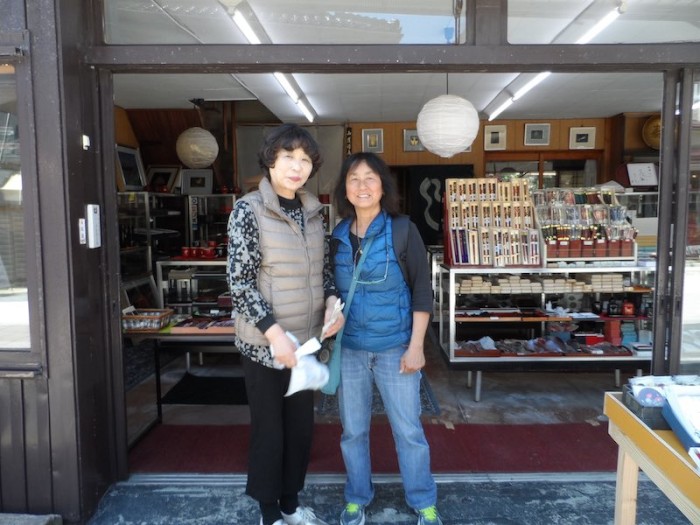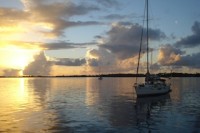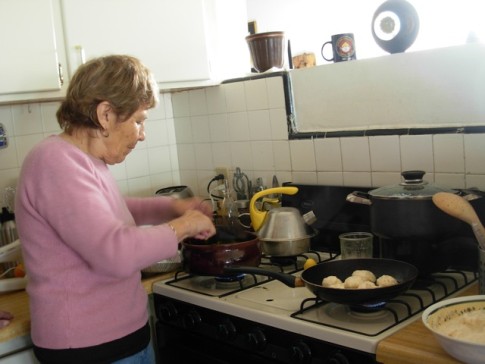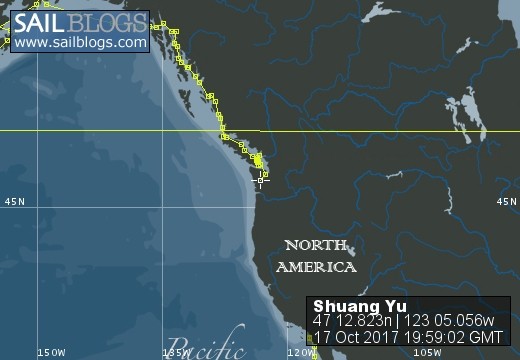
Joy of Cruising
17 October 2017 | Boat position at Shelton: 47°12.82’N; 123°05.01’W
16 October 2017 | Boat position at Shilshole Marina: 47°40.65’N; 122°24.59’W
15 October 2017 | Boat position at Friday Harbor: 48°32.20’N; 123°0.59’W
27 September 2017 | Boat position on Granville Island: 49°16.35’N; 123°08.24’W
26 September 2017 | Boat position on Granville Island: 49°16.35’N; 123°08.24’W
22 July 2017 | Boat position at Granville Island: 49°16.35’N; 123°08.24’W
21 July 2017 | Boat position at Vancouver Rowing Club, Canada: 49°17.77’N; 123°07.85’W
20 July 2017 | Boat position at the Vancouver Rowing Club, Canada: 49°17.77’N; 123°07.85’W
19 July 2017 | Boat position at the Vancouver Rowing Club: 49°17.77’N; 123°07.85’W
18 July 2017 | Boat position in Active Pass: 48°51.64’N; 123°18.54’W
17 July 2017 | Boat position at Otter Cove, Pender Island, Canada: 48°47.84’N; 123°18.51’W
15 July 2017 | Boat position at Port Bedwell, Pender Island, Canada: 48 44.97'N; 123 13.97'W
14 July 2017 | Boat position at RVYC: 48 27.19'N; 123 17.73'W
13 July 2017 | Boat position at RVYC: 48 27.19'N; 123 17.73'W
12 July 2017 | Boat position at SNSYC: 48 40.44'N; 123 25.02'W
12 July 2017 | Boat position at SNSYC: 48 40.44'N; 123 25.02'W
11 July 2017 | Boat position at SNSYC: 48 40.44'N; 123 25.02'W
10 July 2017 | Boat position at Ganges: 48 51.00'N; 123 29.53'W
09 July 2017 | Boat position at Ganges: 48 51.00'N; 123 29.53'W
08 July 2017 | Boat position at Montague Harbour: 48 53.63'N; 123 24.03'W
Wajima 3
09 May 2016 | Boat position at Wajima, Japan:37 23.858'N; 136 54.333'E
Pam Lau and Ted Berry

Picture: This lady owns the shop that sells lacquer-wear. I bought some souvenirs from her.
Traditional Japanese lacquer-ware is the signature of Wajima. They had been making it since 1476. I have seen "lacquer" bowls at the Japanese dollar stores for $1 each and others little more expensive ones at department stores but I don't know anything about them so I never buy them.
Lacquer-ware is made from Urushi, which is a milky-white sap that comes from urushi trees found in Japan, China and Korea. The sap is collected in the same way that rubber is collected from rubber trees. A groove is cut into the cambium layer of the tree so that the liquid sap runs out and is collected in a container. After removing impurities and other refinements, many coats of the liquid are applied to wooden products like bowls, plates, chopsticks, panels and so. After the liquid hardens, the urushi gives it smooth and lustrous shine as well as being resistant to the strongest acids; acids that melt iron, gold, silver and ceramics. In other words, it is extremely durable. It takes 75 to 130 stages of handiwork before the product is ready for decoration. After I read the advertising brochure, I immediately went out and bought two small bowls, which cost a fortune and made me feel guilty for days. This is my justification: Lacquer ware is considered an underlying part of Japanese culture so I wanted to bring some home with me. The bowls are not decorated but incredibly beautiful.
Traditional Japanese lacquer-ware is the signature of Wajima. They had been making it since 1476. I have seen "lacquer" bowls at the Japanese dollar stores for $1 each and others little more expensive ones at department stores but I don't know anything about them so I never buy them.
Lacquer-ware is made from Urushi, which is a milky-white sap that comes from urushi trees found in Japan, China and Korea. The sap is collected in the same way that rubber is collected from rubber trees. A groove is cut into the cambium layer of the tree so that the liquid sap runs out and is collected in a container. After removing impurities and other refinements, many coats of the liquid are applied to wooden products like bowls, plates, chopsticks, panels and so. After the liquid hardens, the urushi gives it smooth and lustrous shine as well as being resistant to the strongest acids; acids that melt iron, gold, silver and ceramics. In other words, it is extremely durable. It takes 75 to 130 stages of handiwork before the product is ready for decoration. After I read the advertising brochure, I immediately went out and bought two small bowls, which cost a fortune and made me feel guilty for days. This is my justification: Lacquer ware is considered an underlying part of Japanese culture so I wanted to bring some home with me. The bowls are not decorated but incredibly beautiful.
Comments
| Vessel Name: | Shuang Yu |
| Vessel Make/Model: | Catalina 400 |
| Hailing Port: | San Diego |
| Crew: | Ted Berry and Pam Lau |
| Home Page: | www.sailblogs.com/member/tedandpam/ |
| Social: |

Who: Ted Berry and Pam Lau
Port: San Diego



